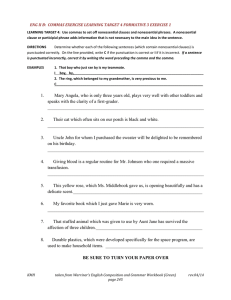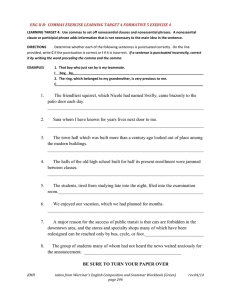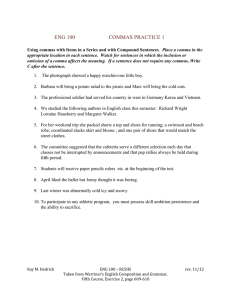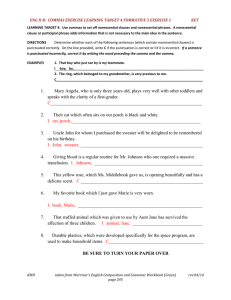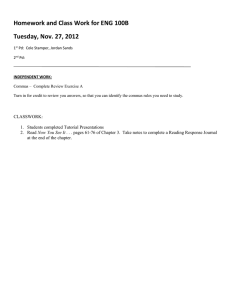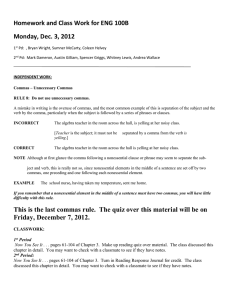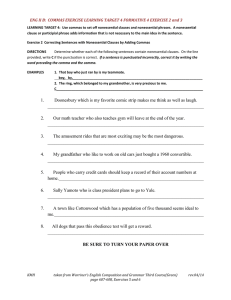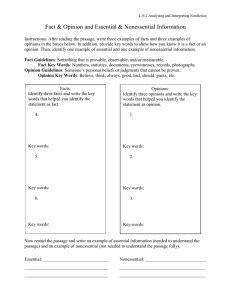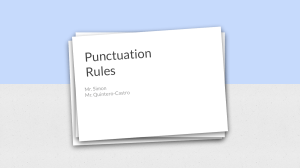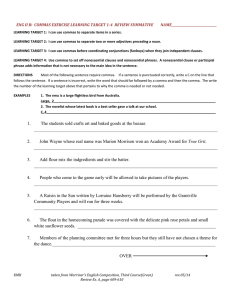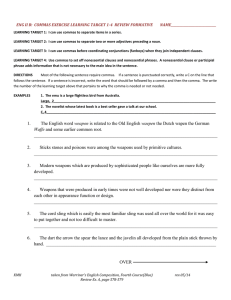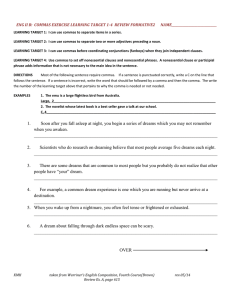ENG 100 COMMAS PRACTICE 3
advertisement
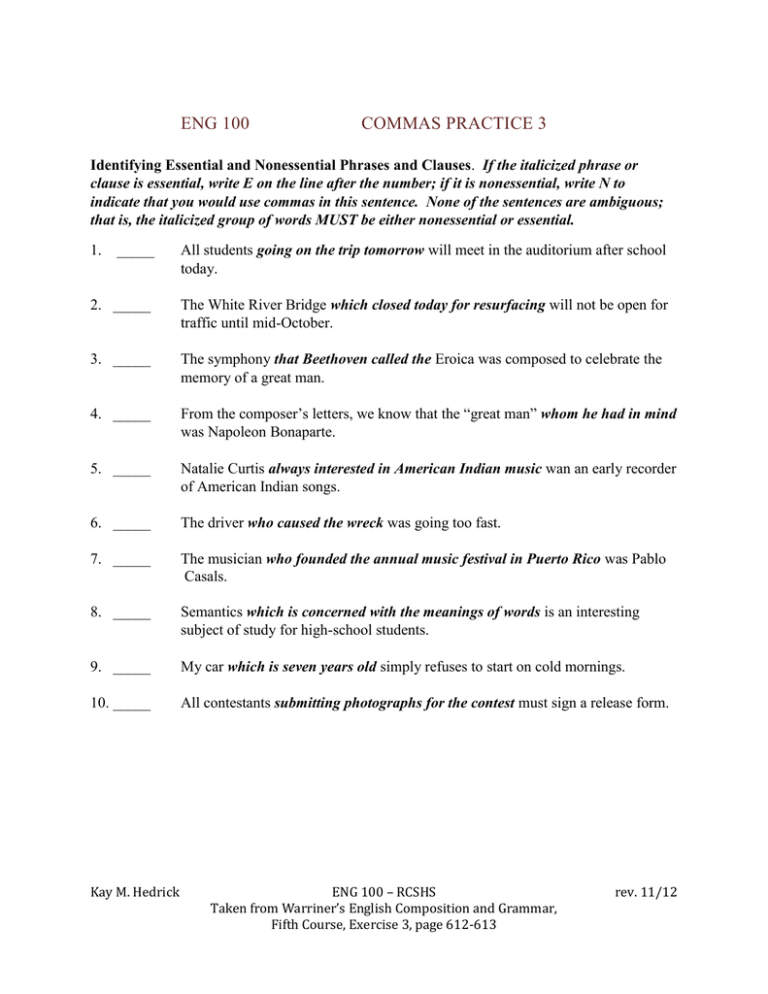
ENG 100 COMMAS PRACTICE 3 Identifying Essential and Nonessential Phrases and Clauses. If the italicized phrase or clause is essential, write E on the line after the number; if it is nonessential, write N to indicate that you would use commas in this sentence. None of the sentences are ambiguous; that is, the italicized group of words MUST be either nonessential or essential. 1. _____ All students going on the trip tomorrow will meet in the auditorium after school today. 2. _____ The White River Bridge which closed today for resurfacing will not be open for traffic until mid-October. 3. _____ The symphony that Beethoven called the Eroica was composed to celebrate the memory of a great man. 4. _____ From the composer’s letters, we know that the “great man” whom he had in mind was Napoleon Bonaparte. 5. _____ Natalie Curtis always interested in American Indian music wan an early recorder of American Indian songs. 6. _____ The driver who caused the wreck was going too fast. 7. _____ The musician who founded the annual music festival in Puerto Rico was Pablo Casals. 8. _____ Semantics which is concerned with the meanings of words is an interesting subject of study for high-school students. 9. _____ My car which is seven years old simply refuses to start on cold mornings. 10. _____ All contestants submitting photographs for the contest must sign a release form. Kay M. Hedrick ENG 100 – RCSHS Taken from Warriner’s English Composition and Grammar, Fifth Course, Exercise 3, page 612-613 rev. 11/12
